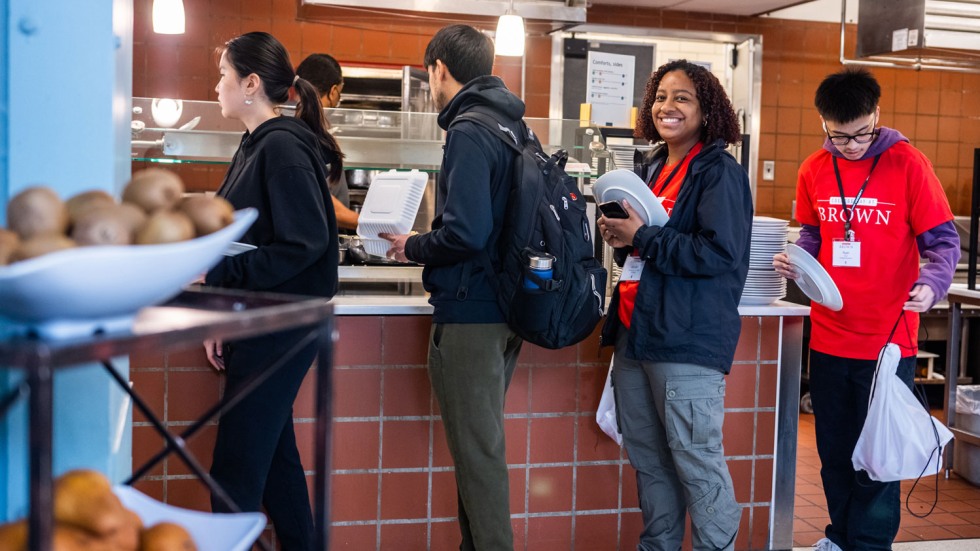According to Soljane Martinez, the Annenberg Institute’s education coordinator, the day of learning, games and information sessions isn’t just to show students a slice of life at Brown in particular. It’s to raise awareness of the full spectrum of educational possibilities, from vocational schools to community colleges to four-year universities, in recognition of Ocean State students’ diverse backgrounds and aspirations.
“This event has become a great example of true partnership between the University and Rhode Island educators,” Martinez said. “By staying in constant conversation with local educators and education leaders all year long, we’re able to design a day filled with activities that connect directly with these students’ many academic and extracurricular interests. The idea is to get them excited about college, whether they’re interested in Brown or they have their heart set on other colleges and universities.”
‘What If?’
Now in its second year, College Day has already expanded since 2022 — bringing in 175% more students this year, and inviting students and educators from Central Falls and Pawtucket, in addition to kids, teachers and counselors from more than a dozen schools in Providence. In 2023, students chose from an even larger selection of classes and sessions led by faculty and staff at Brown, where they learned hands-on lessons about everything from data science to the principles of podcasting. And, new this year, students and educators got the lay of the land with campus tours led by Brown students before heading off to their classes — giving them the opportunity to ask for more details about Brown’s student organizations, traditions and academic concentrations.
The event is one among an ever-growing number of ways in which Brown community members engage with Providence schools each year. The University works closely with leaders in Providence to support K-12 education through teaching, training and mentoring, research, volunteer efforts and financial investments aligned with the schools’ priorities. That engagement helps enrich students’ classroom learning, transform physical spaces, innovate teaching practices and inform local education policy. Area high school students have the opportunity to receive SAT preparation and tutoring from Brown students, learn drone-based robotics and work alongside University researchers and administrators in internships.
At an opening ceremony for College Day held in Sayles Hall, Brown President Christina H. Paxson welcomed students and encouraged them to ask questions throughout the day — about athletics, academics and everyday life on campus.
“College might seem like a long way off, but it will be here before you know it, and the time to think about it is now,” Paxson said. “Today, you’re going to find out what it’s like being in a college classroom. You’re going to find out what types of things you can study in college… from space exploration to medieval literature. [And] by the end of the day, I want all of you raising your hands and telling me that you plan to go to college.”








